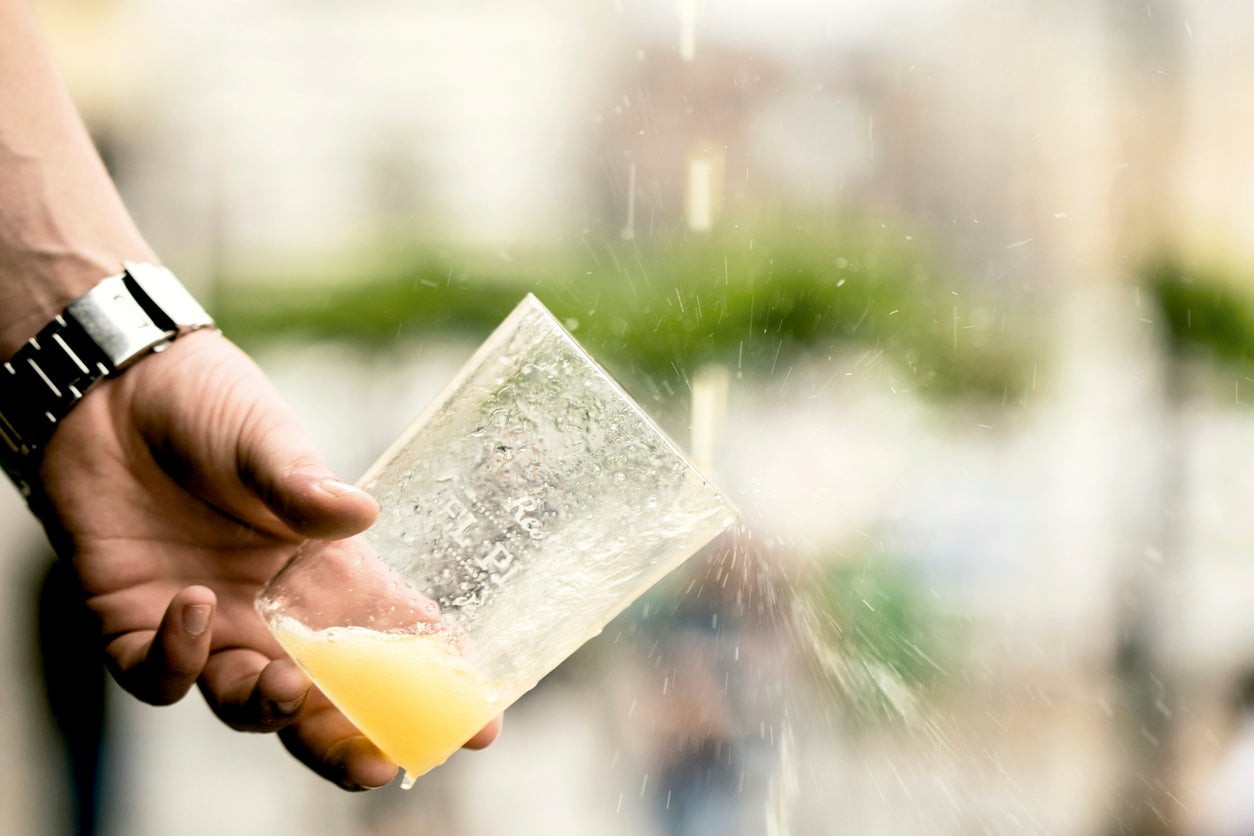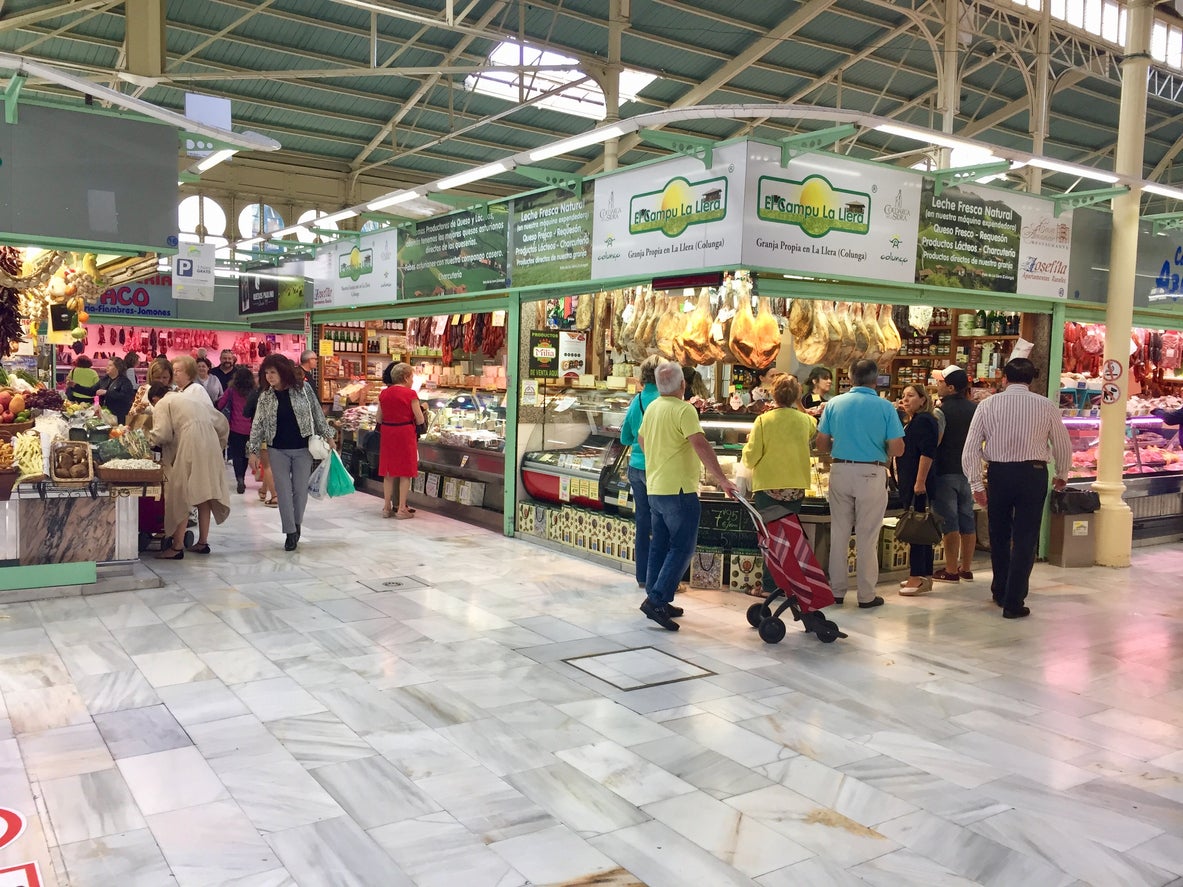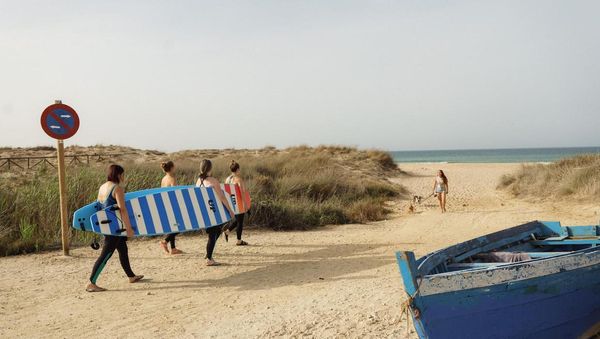
Wedged between the north Spanish coast and the Cordillera Cantabrica’s often snow-dusted peaks, the capital of beautifully green Asturias is a lively, elegant city with a colourfully painted old town, a thriving food-and-drink scene and a collection of entirely unique pre-Romanesque monuments.
Though often overlooked by foreign visitors, Oviedo is popular with savvy Spanish travellers who drop by to wander around the medieval centre, taste some of Asturias’s 40-odd cheeses and glug local cider poured traditional-style from up high.
It was from Oviedo that King Alfonso II of Asturias set off for Santiago de Compostela in the ninth century, giving birth to the first documented journey along the famous Camino de Santiago – today this challenging inland route is called the Camino Primitivo. The region’s unrivalled pre-Romanesque architecture, meanwhile, emerged in eighth century Asturias when most of the rest of Spain was under Moorish rule, and now lives on in a string of 15 buildings.
Read more on Spain travel:
Best time to visit Oviedo
The best months are May/June and September when temperatures are warmer but there aren’t any summer crowds; Oviedo hosts its Fiestas de San Mateo celebrations in September, too. October is another great time to visit, with local sidrerias (cider bars) at their liveliest during apple harvest season, though this is also when the Princess of Asturias Awards happen so accommodation prices can skyrocket. July and August are peak season (and some businesses close for summer holidays).
Best things to do in Oviedo
Savour Asturian history at Oviedo cathedral
Any visit to Oviedo should start with the landmark Catedral de San Salvador (€7; £6), whose distinctive Gothic tower spirals 80m above the historic centre (take a spin up for a bird’s-eye view; €8). Most of what we see today dates from the 13th to the 18th centuries, but the highlight is the Unesco-listed Camara Santa, a pre-Romanesque jewel built from the eigth century onwards as a home for holy relics, by orders of Alfonso II.

Climb Monte Naranco
Asturias’s most mesmerising pre-Romanesque buildings are dotted across green-clad Monte Naranco, just northwest of Oviedo. A Unesco World Heritage Site since 1985, the Palacio de Santa Maria del Naranco is thought to have been a royal hunting lodge, built for King Ramiro I in the ninth century. A few hundred metres away stands the Iglesia de Miguel de Lillo, also Unesco-protected and from the same time. A joint ticket costs €4, with visits by 30-minute guided tour (though you can admire the outside freely). Near the city centre, don’t miss the ninth-century Iglesia de San Julian de los Prados (€3), known for its vibrant frescoes.
Old town wander
Strolling around the historic centre is an essential part of the Oviedo experience, checking out squares such as Plaza El Fontan, Plaza del Paraguas or Plaza de Porlier and stopping for ciders or a long lunch on any old terrace. To explore with a local expert, book a tour with EnRutAsturias.
A few steps from the cathedral, the Museo de Bellas Artes de Asturias (admission free) has works by Picasso, Sorolla, Goya, Miro, El Greco, Zurbaran and other Spanish favourites in a duo of grand palaces from the 17th and 18th centuries, and a white-walled contemporary extension by Navarran architect Patxi Mangado. The neighbouring Museo Arqueologico de Asturias (admission free) offers a deep-dive into the region’s long history (prehistoric cave art, Roman ruins), in the 16th-century cloister of an old monastery.

Where to stay in Oviedo
Barcelo Oviedo Cervantes
Switched-on Spanish chain Barcelo is behind this stylishly restored 20th-century mansion flanked by two contemporary-design wings, near the Campo de San Francisco park; rooms have a calming pared-back look and the glossy lobby hosts a modern-Asturian restaurant. barcelo.com
Rooms available from{{#price}}{{price}}per night{{/price}}{{^price}}Check availability for dates and prices{{/price}}
Rates provided by Booking.com
Eurostars Hotel de la Reconquista
Originally born in 1752 as a hospice, the city’s most sought-after hotel is a grand, protected five star, just off the Campo de San Francisco. Beyond the Baroque facade, there are Asturian artworks and classic-feel rooms mostly overlooking a sprawling patio. eurostarshotels.com
Rooms available from{{#price}}{{price}}per night{{/price}}{{^price}}Check availability for dates and prices{{/price}}
Rates provided by Booking.com
Hotel Fruela
For a sensibly priced base on the edge of the old town, this light-filled 19th-century building converted with a splash of style (warm woods, geometric lamps) is ideal. Doubles from €53, room only. hotelfruela.com
Best restaurants in Oviedo
Oviedo’s most-loved street is sloping Calle Gascona or El bulevar de la sidra (“the Cider Boulevard”), where people spill out from the sidrerias. Always busy, Tierra Astur serves Asturian wines, award-winning ciders, classic local dishes such as fabada (a meaty bean stew) and platters of Cabrales and Gamoneu cheeses.

In the old town’s buzzy narrow alleys, El Gato Negro is another popular sidreria, with terrace tables, good-value weekday menus del dia (set lunch menus) and traditional-style plates including cider-cooked hake. There are more typical Asturian flavours at Casa Ramon on Plaza El Fontan, which produces its own meat and sources its seafood and fish from the next-door Mercado El Fontan.
For a more creative taste of the Asturian kitchen, book a table at Ca’ Suso, run by brothers Ivan and Vicente Fernandez Feito. Their signature dish is croquettes made with blue La Peral cheese, but it’s all delicious, and the tempting desserts are often infused with fruit from their own trees.
Led by respected Asturian chefs Nacho and Esther Manzano, chic casa de comidas (“meals house”) Gloria puts a contemporary twist on market-fresh local flavours. Just-cooked tortilla, arroz con pitu (rice with free-range chicken) or spicy spider crab with brioche might pop up on the seasonal menu – absolutely worth seeking out just northwest of the Campo de San Francisco.
Best cafes and bars in Oviedo
Whether you fancy an early-morning coffee or a culin (shot) of cider, Oviedo is packed with wonderful places to grab a drink. The whole old town buzzes with bars, particularly around Calle Sol, Plaza del Paraguas, Calle Carpio and Calle de Mon.
Opposite the market, cafe-bakery Dos de Azucar is ideal for homemade cakes and pastries or a cheese-stuffed bocadillo (bread roll) with your cafe con leche. It’s a similar scene at vintage-vibe Per Se Cafe, near the cathedral, which also has original cocktails and live music.

La Leyenda del Gallo, a sleek bar-restaurant near the cathedral, serves some of Oviedo’s most fabulous cocktails; you’re just as welcome to pop in for an expertly mixed Long Monster Tea as for truffled tortilla, burrata salad and jamon croquettes. Mala Sana is another great spot for creative cocktails and artisanal vermouths.
Where to shop
Calle Uria and Calle Palacio Valdes are Oviedo’s main shopping streets, home to all the major Spanish brands (Mango, Zara, El Corte Ingles).
Dive into a wonderland of fresh Asturian produce at the old centre’s 19th-century Mercado El Fontan – think local vegetables, just-baked bread, seasonal fruit, Picos de Europa cheeses. Clothes and flower stalls spill into Plaza El Fontan on Thursdays and there’s a second-hand market on Sundays.
A few streets away at Atelier Emea, designer Macarena Alvarez Marcos makes gorgeous hats, from summer beach numbers to formal floral headwear. Over near the Campo de San Francisco, San and Coco is a stylish independent boutique stocking brands such as Des Petits Hauts and Becksondergaard.

For something sweet, pop into marble-clad confectionery shop Camilo de Blas, founded on Calle Jovellanos back in 1914; the thing to try is the carbayones (a puff-pastry sweet made with egg yolk, sugar and almonds), though it also sells Asturian ciders and cheeses. Neighbouring Rialto is another classic, known particularly for its moscovitas (almond-paste biscuits coated with chocolate).
Architectural highlight
West of the historic centre, Oviedo’s futuristic, shell-shaped Palacio de Exposiciones y Congresos was designed in concrete, glass and iron by superstar Valencian architect Santiago Calatrava.
How to travel around Oviedo
Central Oviedo is easily explored by walking. For the Monte Naranco monuments, take bus A2 from Calle Uria.
FAQs
What currency do I need?
Euros.
What language do they speak?
Spanish.
Should I tip?
There’s no obligation to tip in Spain but if you’re happy with a restaurant’s service, 5-10 per cent is good.
What’s the time difference?
One hour ahead of the UK.
What’s the best view?
From the Monumento al Sagrado Corazon (a stone statue of Christ) at the top of Monte Naranco.
Insider tip?
Tie in the lively seaside towns of Ribadesella and Llanes with their surf-loving beaches and original hotels such as La Posada de Babel (doubles from €88, room only). Or head on to the Picos de Europa mountains, where the Parador de Cangas de Onis (doubles from €94, room only) and organic farmhouse-and-hotel Posada del Valle (doubles from €74, room only) make perfect bases. Alternatively, roam around the little-known Parque Natural de Somiedo just southwest of Oviedo – you might spot rare Cantabrian brown bears.
Getting there
Trying to fly less?
There are daily trains between Oviedo and Madrid, with a new high-speed AVE line expected to launch sometime in 2023. Or travel by ferry from the UK to Santander, then hop on the narrow-gauge FEVE train to reach Oviedo.
Fine with flying?
Vueling and Ryanair have direct two-hour flights between London and Asturias Airport, 45km northwest of Oviedo.
Read our reviews of the best hotels in Spain










